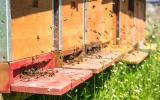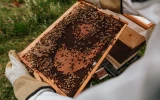How Many Bees Do You Need to Start a Colony or Hive?
Could you just grab a handful of bees & make them create a new colony? No; you need at least 10,000! Find out how you can measure a package & why you need so many.
You’ll need roughly 10,000 bees and one queen bee to start a colony. To check, weigh the package and make sure it’s between 2.5 and 3 pounds. One bee weighs 0.00025 to 0.00030 pounds, so make sure that it reaches the estimate before releasing them into the hive.
Ten thousand looks like an eye-watering number of bees. If you aren’t discouraged by this amount yet, you may wonder why you need to have so many—so here’s a quick guide on what happens in a colony and how. Let’s find out how the term “busy as a bee” was coined!
Summary
- You need 10,000 bees and one queen bee to start a colony. You can check by weighing the package and making sure it's between 2.5 and 3 pounds.
- Bee colonies are tightly structured communities, with drones, workers, and the queen all working together to maintain the hive.
- Worker bees make up a bulk of the colony and perform a variety of duties for the hive, drones only exist to mate, and the queen bee holds the colony together.
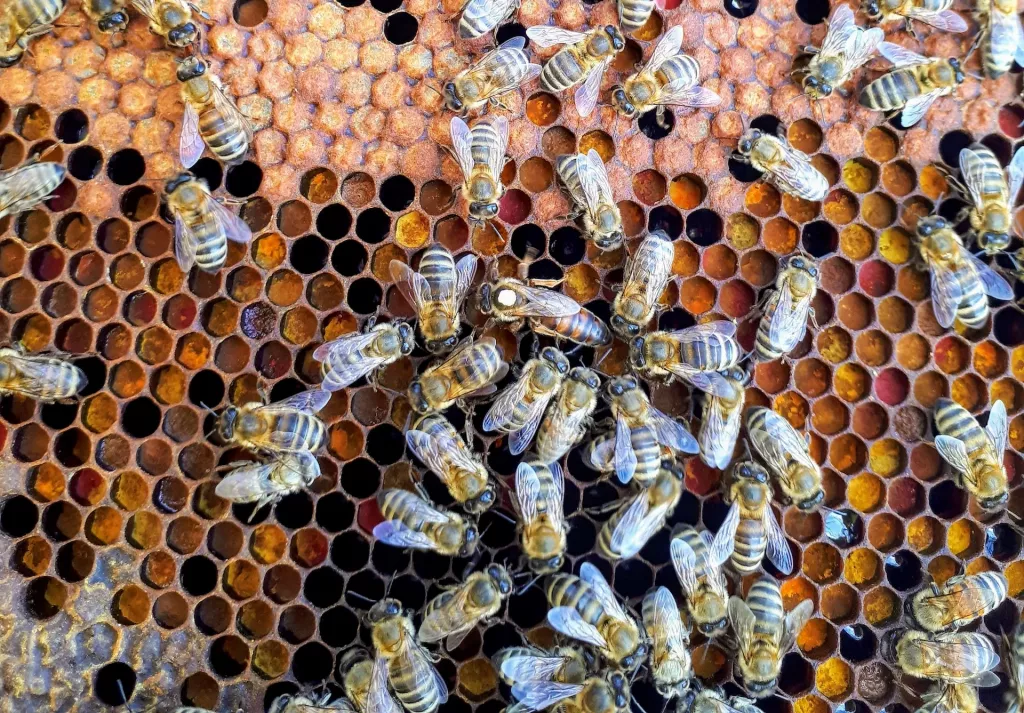
On this page:
Why So Many Bees?
Honeybees are social insects and live together in very large, very well-organized family groups. They’ve evolved extensively to form and function within a structure. This distinguishes them from other solitary insects and is the reason why they’re so busy: with nest construction, environmental control, and division of labor to think about, there is no time for the honeybee to take a break.
All the members of a colony are assigned to a task that is related to their adult age and the needs of the colony, which varies according to the season. Together, they work to ensure the survival and reproduction of the entire colony. It’s impossible for an individual bee to survive without the support of everyone else.
Above all, their social structure is enforced by the presence of the queen bee, who releases pheromones to keep the colony united.
The cost of a standard bee package will fall between $260 and $275. Once the colony survives its first winter, you can start harvesting honey and other hive products. The cost of investing in additional hives is also reduced after you purchase your first package, since you already have the tools, equipment, and bees needed to make use of the hive.
Get in touch with your local beekeepers and beekeeping association for bee packages. It's a great way to bond with your fellow enthusiasts and also ensures that the bees you buy are proven to thrive in your local region.
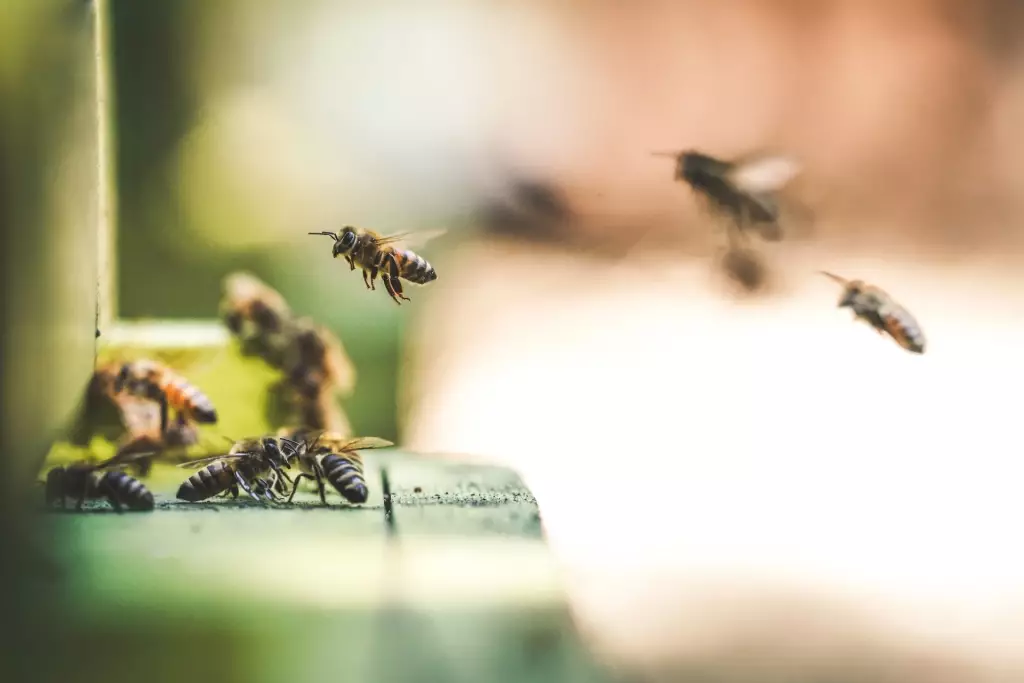
Understanding the Bee Colony
A bee hive consists of three different adult bees: the workers, the drones, and the queen. At any given moment, a hive should have a few thousand worker bees busy with building the nest, rearing the brood, and collecting food. This intense and complex coordination is made possible by a distribution of chemical pheromones and communicative movements.
An old hive that has made it past its first year and is already producing honey will have around 50,000 to 60,000 bees of different age classes. Here’s a look at the different types of bees, with a closer look at the pivotal function of the queen bee.
Female Worker Bees
Most of the colony is made up of female worker bees, who are the smallest in size and take 21 days to develop from larva. These are sexually undeveloped females who, under normal hive conditions, do not lay eggs.
Worker bees are built especially to perform a wide variety of work around the hive. They have scent glands, wax glands, pollen baskets, and brood food glands. Worker bees only live three to six weeks, spending their entire lives working until they die of exhaustion.
Male Drone Bees
Drone bees are distinguishable because they have larger compound eyes and they do not have stingers. These bees do not contribute to the hive. The sole responsibility of drone bees is to mate with neighboring queens. This diversifies the spread of healthy genes in bees within the area.
Drones need to stay healthy for the mating period, and will be kicked out of the hive in the autumn if they have not yet performed their duties. They die instantly after mating.
Queen Bee
Queen bees are easily recognizable by their long bodies and smaller wings. The queen bee bears the responsibility of keeping the hive together. She has two main functions: the first is reproduction and the second is unification of the hive.
A queen lays eggs to ensure the growth in population of the entire hive. She is the only sexually developed female in the colony and produces, on average, 1,500 eggs a day.
The queen also releases pheromones that give her colony a unique identity. This is what keeps worker bees and drones loyal to the hive. By extension, the health and temperament of the queen also affects the colony. Her genetic makeup and that of the drones she has mated with plays a big role in the temperament, quality, and size of the hive.
When Does a Queen Bee Need to Be Replaced?
One particular pheromone called the queen substance is given to the worker bees. This prevents them from producing new queens. If the queen can no longer produce this substance, the worker immediately prepare to replace her.
There are many reasons for a decline in the queen’s ability to produce queen substance: supersedure, swarming, death of the queen, and disease are just a few.
If your hive is superseding or swarming, it’s possible for more than one queen to be present in the colony as they undergo the transition.
There are times when you may need to replace the queen for your colony. This requires a practiced eye and careful observation, so if you aren’t sure about your findings then it’s best to consult a local beekeeper for a second opinion.
Plenty of Drone Cells
Drone bees hatch from unfertilized eggs. If you notice plenty of drone cells, which are usually located in groups at the lower edge of the frame and protrude from the cell, then it could be a sign that the queen is sick or mated poorly, or that the worker bees have started laying.
Lack of Eggs
No eggs means that your hive no longer has a queen. A quick way to determine how long your hive has been queenless is to look at the brood. If you don’t see any eggs, then they’ve been operating without a queen for at least three days, and if the brood does not have any uncapped larvae, then they’ve been queenless for at least eight days.
You’ll need to act fast because it gets harder for bees to accept a new queen the longer they’ve gone queenless.
Multiple Eggs Per Cell
Multiple eggs in one cell are a clear indication that the worker bees have started to lay eggs. This only happens when the hive has been queenless for more than a month. Laying workers can only produce drones, so you need to act fast before the colony dwindles away.
In this scenario, requeening is no longer recommended. Consider combining the laying working colony with another hive or nuc instead, or shaking the bees out in front of them.
Grumpy Bees
A queenless hive is on edge; its honeybees are defensive and they may be likelier to sting you. While some hives may inherently seem defensive because of other factors, like genetics, environmental stress, or mites, a new queen that’s been bred exclusively for gentleness may help improve the hive’s temperament.
Spotty Brood Pattern
The brood chamber is where worker bees make cells that house the eggs, larvae, and pupae. Generally, these cells should be close together and solid. If the pattern seems sporadic or spotty, then it could mean that the hive is suffering from poor nutrition, disease, or a failing queen .
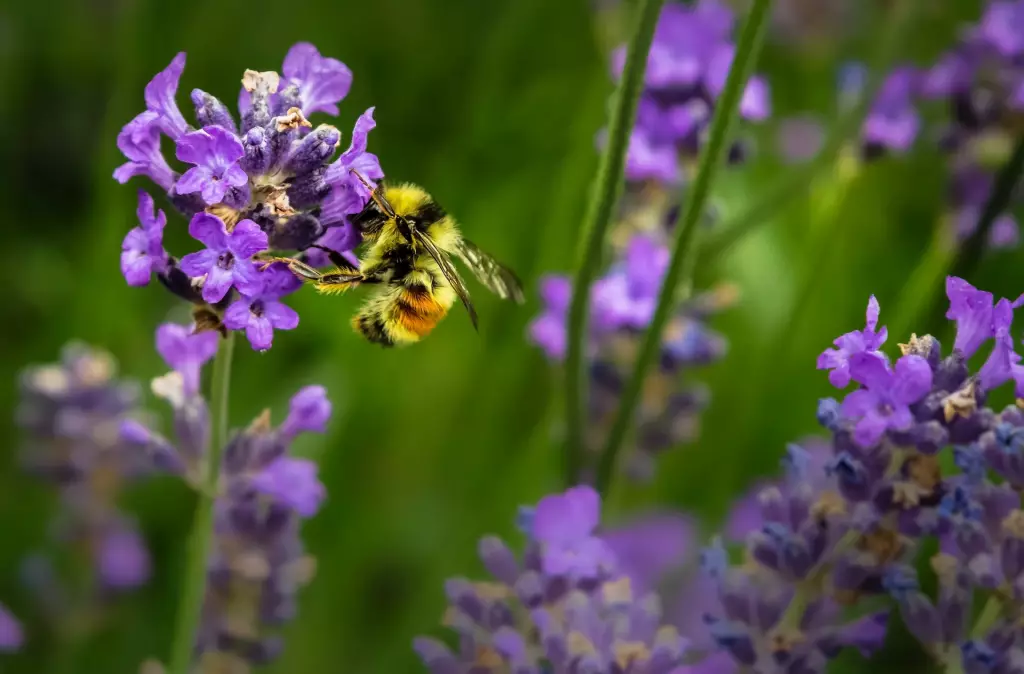
Different Bee Jobs and Activities
Nurses
Nurse bees are fledgelings that have just hatched. The minute they’re out, they immediately clean their hatching cell to prepare it for the next egg. The first duty for any working member of the colony is to care and feed the brood.
Undertakers
The undertakers’ main task is to monitor the hive for dead bees and clean up after any corpses. With so many bees zipping in and out of the colony at any given time, it is inevitable that there are a few who have already passed away in the mix. Undertakers will make sure that their bodies are disposed far away from the hive, and clean up the bee parts and debris after.
Foragers
Foragers are the most popular worker bees, maybe because they’re the most visible to the human eye. They work around the clock to scour for goods within a three-mile radius from the hive. Once they’ve found a suitable location, they start stocking themselves up with nectar, pollen, propolis and water.
After their stomachs are full and their pollen baskets are filled, the foragers will return to the hive. They will continue this cycle for as long as they can.
Since this job involves flying hundreds of miles a day, the wings of a forager will eventually suffer from constant use. It’s one of the last duties that a worker bee will perform for the hive, and they will forage until they collapse from exhaustion Maybe saying you’re as busy as a bee isn’t such a good thing after all.
Architects
As a young bee grows, its wax glands mature. This is the part of the body that secretes wax, which is used to build comb. Wax is also used to cap pupae and ripen honey cells. To add to the responsibility of building the hive and contributing to the brood, architects also repair damaged comb and fill cracks in the hive with propolis.
Cleaners and Organizers
This section of worker bees is responsible for cleaning their sisters and helping foragers offload when they return from their trips. They collect pollen and nectar, pack it into cells, and put it away for later.
Honey Makers
Some worker bees may find themselves working on the honey production line. After the foragers return to the hive, they regurgitate the nectar from their stomach. This is passed from mouth to mouth between bees in the hive to reduce moisture content. It is estimated that each bee chews the nectar for half an hour.
After this process, the nectar is placed into an empty cell and it is stored there until it is needed, with bees fanning over it to make sure that the moisture levels stay low.
Queen’s Attendants
This is an esteemed position and not all worker bees get the privilege of personally attending to the queen. Since the queen bee has plenty of work to do, she needs little helpers to groom and feed her.
Guards
Ever been stung while walking up to a hive? That’s probably an overzealous guard just trying to do her job. Guards watch over the hive’s entrances so that they can keep out small animals and other insects. For this position, a worker bee is required to develop a mature stinger.
